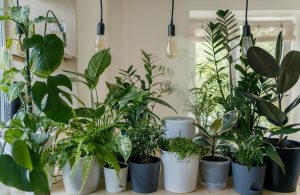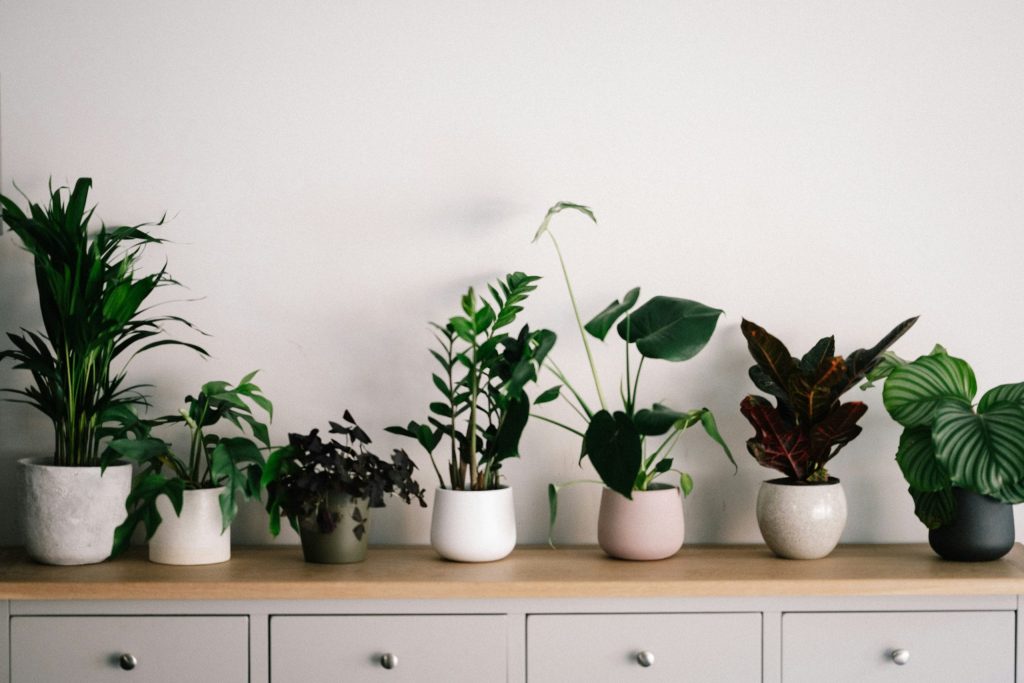Houseplants are a staple decor in many people’s homes, helping to lower stress levels and creating a more comfortable environment. Many plant species also improve indoor air quality. You may not realize how many pollutants linger in your house, some of which can cause serious health outcomes. Protecting your household from these toxins is simple enough with air-purifying plants. Discover which pollutants may adversely impact your household the most and which species to keep around for better air quality.
Is Indoor Air Worse Than Outdoor Air?
Locking yourself indoors will protect you from harmful ozone, fine particulate matter, and nitrogen dioxide, right? False — the U.S. Environmental Protection Agency says Americans spend 90% of their time indoors, where air pollution levels are two to five times higher than outside.
Indoor air pollutants come from paints, construction materials, electronic devices, furniture, pets, and appliances. Bacteria, fungi, and mold are other familiar sources affecting your respiratory health. Even breathing can produce high carbon dioxide (CO2) concentrations, leading to fatigue, headache, cough, and other symptoms without proper ventilation.
In severe cases, low indoor air quality leads to sick-building syndrome, which can result in death. The World Health Organization says 3.2 million people die annually from household air pollution.
Six Plants to Improve Indoor Air Quality

A commonly cited 1980s NASA study examined 12 houseplants’ abilities to remove trichloroethylene, formaldehyde and benzene from indoor air. The results showed all the plant species improved indoor air quality, some of which eliminated specific contaminants better than others.
Poor air quality is especially hazardous to people with preexisting lung and heart conditions. Breathe easier by adding these six indoor houseplants to each room of your home.
1. Snake Plant
Snake plants are one of the simplest houseplants for people who struggle to keep greenery alive. They can flourish in low to indirect light and survive months without water. These stunning plants grow taller than other houseplants, making a beautiful statement in a living room or bedroom corner.
2. Bamboo Palm
If your bathroom could use some greenery, add a bamboo palm. Bamboo palms grow 2-7 feet tall indoors and prefer environments with medium humidity. Just be sure the bathroom gets plenty of natural sunlight. While cleaning solutions eliminate bacteria and other germs in the bathroom, a bamboo palm can help improve air quality by removing harmful toxins.
3. Golden Pothos
Allow the golden pothos’ leafy vines to dangle while situated on a shelf or hung from the ceiling. These plants don’t require more than low or fluorescent lighting and occasional watering to survive. Among all houseplants, golden pothos are foolproof to care for.
4. Spider Plants
Most beginners prefer to buy spider plants due to their durability under various growing conditions, including periods of drought. The plant’s roots store water for those times you forget. They usually grow 12-15 inches tall and may have yellow stripes in the leaves, giving them even more visual appeal.
5. Boston Fern
Boston ferns are distinct for their bright green, feathery fronds. According to one study, the Boston fern’s soil effectively absorbs formaldehyde — known for causing eye, nose and throat irritation, coughing and nausea — while its leaves absorb CO2. These plants love bright, indirect light and weekly watering to avoid drying out. Many people decorate with potted Boston ferns or hang them midair.
6. Aloe Vera
Aloe vera is a versatile, attractive houseplant for filtering indoor air. As a succulent, these plants only require watering if the top inch of the soil is dry — too much saturation can cause root rot. You might also cut an aloe vera stem and use the inner gel to soothe burns, cuts and other skin wounds.
How to Care for Indoor Plants

Fortunately, the most purifying houseplants are usually easy to care for. Depending on how much sunlight you have coming in, your plants will do well in front of a window. Otherwise, you can purchase artificial LED grow lights to compensate for insufficient natural light. Some grow lights stay on for 3-12 hours, depending on your plants’ needs.
Other tips for caring for indoor plants successfully include the following:
- Read each plant’s care instructions to determine the best potting soil, sunlight requirements and watering needs.
- Aerate the soil by mixing in pebbles or gently breaking it up with chopsticks, creating better air and water flow.
- Mist the leaves with water to prevent spider mites and other pests.
- Prune dense foliage and remove dead leaves and stems for optimal growth.
- Transfer overgrown plants to larger pots.
- Maintain optimal humidity of 40-60%.
Studies show having an array of houseplant species is best for removing harmful toxins from the air. Likewise, proper ventilation in your home enables plants to reduce PM2.5 by 64.61% instead of just using plants to purify your home’s air without adequate ventilation.
A Green Home Is a Healthy Home
Houseplants can make a significant impact on your home’s overall health. By incorporating various air-purifying plants, you can better protect your and your household’s well-being with cleaner air. Just choose low-maintenance plants you feel confident you can care for long-term.

